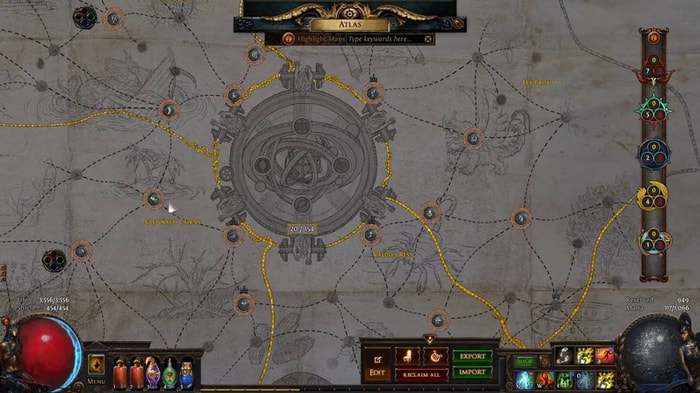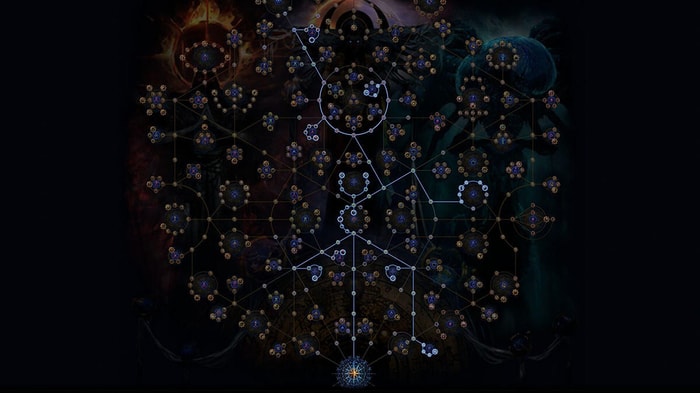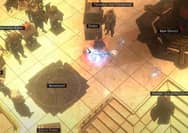Welcome to the "Atlas Progression Guide" for Path of Exile, an action-packed online RPG that challenges players to progress through a dangerous world filled with monsters, powerful bosses, and incredible rewards. The Atlas of Worlds is a key feature in Path of Exile that allows players to access endgame content, fight tough enemies, and earn some of the best loot in the game.
In this guide, we'll walk you through the steps to progress through the Atlas, from unlocking it to defeating the Uber Elder and earning valuable rewards. Whether you're a beginner or an experienced player, this guide will provide you with the knowledge and strategies you need to succeed in the Atlas of Worlds.

Basics Of Atlas Map & How Can Earn Rare Rewards
In Path of Exile, an Atlas Map is a type of endgame content that gives a chance to players to earn valuable rewards by facing their nightmare and defeating the tough bosses of Path of Exile. The Atlas is an amazing world with many different maps; each has its layout, enemies, and challenges.
To access the Atlas, you must complete a series of quests in the game's main story that lead you to Zana, Master Cartographer. Once you complete Zana's quests, you can access the Atlas by interacting with the Map Device in your hideout.

Different Map Tier and Rewards
In Path of Exile, the Atlas of Worlds is a key endgame system that players engage with to progress through the game's content. The Atlas is a map system that contains various regions and maps, each with its boss and unique rewards. The higher the tier of the map, the more challenging it will be to complete.
Here is a brief guide to the different tiers of maps in Path of Exile:
● Tier 1 to 5: Also known as "White Map, "These maps are relatively easy and are good for leveling characters and farming low-level loot.
● Tier 6 to 10: Also known as the "Yellow Map." These maps are more challenging and offer better rewards than lower-tier maps. Players should have a decent build and gear before attempting these maps.
● Tier 11 to 15: These maps are considered high-tier and offer some of the best rewards in the game. Players should have a strong build and good gear before attempting these maps. These maps are known as "Red Maps" and will require high skills.
● Tier 16: These maps are the hardest in the game and offer the best rewards. They can only be accessed by completing specific requirements, such as finding a unique map item or completing certain endgame content.
It's important to note that players can shape their Atlas by using currency items to manipulate the layout and tiers of the maps. This can allow players to focus on specific regions and maps they prefer and avoid maps they find difficult.
Ultimately, the best map tier for a player will depend on their build, gear, and personal preferences. Some players may prefer to focus on lower-tier maps for faster clear speeds and easier gameplay, while others may prefer to challenge themselves with high-tier maps for the best rewards.
Atlas Map Passive Skill Tree
The Atlas Passive Tree is a skill tree specific to the Atlas of Worlds expansion. It is a separate skill tree from the main passive skill tree. This skill tree is only used to customize and enhance the character you play in the "Endgame content.
The Atlas of Worlds is the endgame system in Path of Exile, which involves traveling to different maps and encountering powerful bosses called "Elder Guardians" and the "Elder" himself.
The Atlas Passive Tree allows players to gain bonuses and benefits specific to the Atlas system, such as increased item rarity or bonus experience from defeating bosses.
Players can unlock and allocate points in the Atlas Passive Tree by completing specific objectives within the Atlas of Worlds, such as defeating certain bosses or clearing certain map tiers.
The Atlas Passive Tree is highly customizable, and players can allocate points in any direction they choose, allowing for great flexibility in creating a character build tailored to their playstyle and goals.

How Can You Progress in Atlas Map?
To progress through the Atlas, you need to complete maps. Maps can be obtained as drops from monsters or purchased from other players. Each map has a specific tier, and you must complete all of a tier's maps before progressing to the next one.
As you progress through the Atlas, you'll encounter different types of maps with different modifiers. These modifiers increase the difficulty of the map and provide better rewards. You can add additional modifiers to maps by using currency such as Chaos Orbs or Sextants.
Different Regions and Bosses
Conquering regions is another important part of Atlas Map progression. A different Elder Guardian controls each region in the Atlas, and you must defeat these guardians to progress to the next region. After defeating all of the Elder Guardians, you will face the Elder, the most powerful boss. You will need to defeat the boss for extremely rare rewards.
Atlas Maps are a challenging and rewarding aspect of Path of Exile that allows players to test their skills and earn valuable rewards. By completing maps, conquering regions, and fighting tough bosses, you can progress through the Atlas and access some of the game's best content.
What Are Atlas Map Modifiers?
In Path of Exile, Atlas Map modifiers refer to a set of modifiers that can be applied to maps on the Atlas of Worlds. The Atlas of Worlds is an endgame mechanic in POE that represents the game's endgame content. It is a network of interconnected maps that players can explore to gain experience, items, and progress through the game's story.
Use of Modifiers in Atlas
When players complete maps on the Atlas, they can unlock various modifiers that affect the properties of the maps. These modifiers can include increased monster density, item quantity, quality, and more challenging boss encounters.
Players can apply these modifiers to maps in exchange for PoE currency and stack multiple modifiers on a single map for even greater rewards. Some Atlas Map modifiers are specific to certain map tiers, while others are available for any map. Additionally, special modifiers can only be obtained through the completion of certain quests or by using specific items.
Atlas Map modifiers are an important aspect of PoE's endgame content. They allow players to tailor their map experience to their playstyle and earn greater rewards for taking on greater challenges.
Atlas Quest Line and Beacons
As you venture into Yellow maps, new questlines will become visible on the right side of your screen, just beneath the minimap. Completing these questlines will eventually grant you access to the three Beacons on your map device. The Atlas features three main questlines, culminating in an epic boss battle.
● The Searing Exarch
● The Maven
● The Eater of Worlds
The Searing Exarch
The Searing Exarch is a unique monster in the game Path of Exile. It is a type of Exarch, a group of spellcasting enemies that are part of the Temple of Atzoatl in the Incursion league. The Searing Exarch is known for its fire-based attacks and ability to summon fiery minions.
It can also cast a powerful flame wave that can damage players caught in its path. Defeating The Searing Exarch is necessary for players who want to progress through the Temple of Atzoatl and acquire valuable loot. As with other unique monsters in Path of Exile, The Searing Exarch has a chance to drop unique items, including the Temple-specific unique item Searing Touch.

The Maven
The Maven is a powerful being who watches over the player's journey through the Atlas of Worlds. She appears after the player has completed a certain number of maps and offers a series of challenges that the player must complete to progress and earn rewards.
The Maven's challenges involve defeating a series of boss encounters that are more difficult than the standard encounters in the game. The player can accept the Maven's invitation to participate in the challenge. Upon completion, the player will earn powerful rewards that can be used to upgrade their character's equipment.

The Eater of Worlds
The Eater of Worlds is a giant worm-like creature that is a powerful boss and requires a team of players to defeat. The creature burrows underground and emerges to attack the player, using its powerful jaws and tentacles to deal massive damage.
Defeating "The Eater of Worlds" can be challenging, but it rewards the player with valuable loot and experience points. The fight requires the player to dodge its attacks, manage its movement and carefully damage it to take it down.
What are Voidstones and Their Use in Path of Exile
In Path of Exile, Voidstones are rare and valuable items that can be used to modify the modifiers of a rare item. When a rare item is modified using a Voidstone, the existing modifiers are replaced with new ones, making the modifiers potentially more powerful.
Voidstones come in several different types, each of which modifies a different set of modifiers on the rare item. For example, a Voidstone of Power can modify the physical damage modifiers on a rare item, while a Voidstone of Crafting can modify the crafting modifiers.
Voidstones can be obtained as a rare drop from monsters, chests, and other sources in the game or purchased from other players through in-game trading. They are a valuable and sought-after item among players looking to create the most powerful and desirable rare items in the game.

How to Unlock Voidstones?
Voidstones are available to all players in Path of Exile and do not need to be unlocked. However, they are quite rare and difficult to obtain, and you will typically need to progress to higher levels and take on more challenging enemies to have a chance of finding them.
You can increase your chances of finding Voidstones by playing through the game's content, including the main story quests, side quests, and endgame content, such as Maps and Delve. Some of these activities have a higher chance of dropping Voidstones than others, so it's worth experimenting with different areas and monsters to see where you have the best luck.
Earn by Trading
You can also trade with other players to obtain Voidstones. In Path of Exile, the in-game economy is based on a barter system, so you can trade items you don't need for items you do.
Many players specialize in certain types of items, such as crafting materials, rare items, or currency, and you may be able to find someone with a Voidstone that they are willing to trade for something you have.
Conclusion
The Atlas Map Guide is an essential resource for any Path of Exile player looking to master the game's endgame content. The guide offers a detailed overview of the Atlas and its mechanics, including strategies for map completion, atlas progression, and boss fights. It also provides helpful tips on optimizing your build and gear to tackle the most challenging content.



